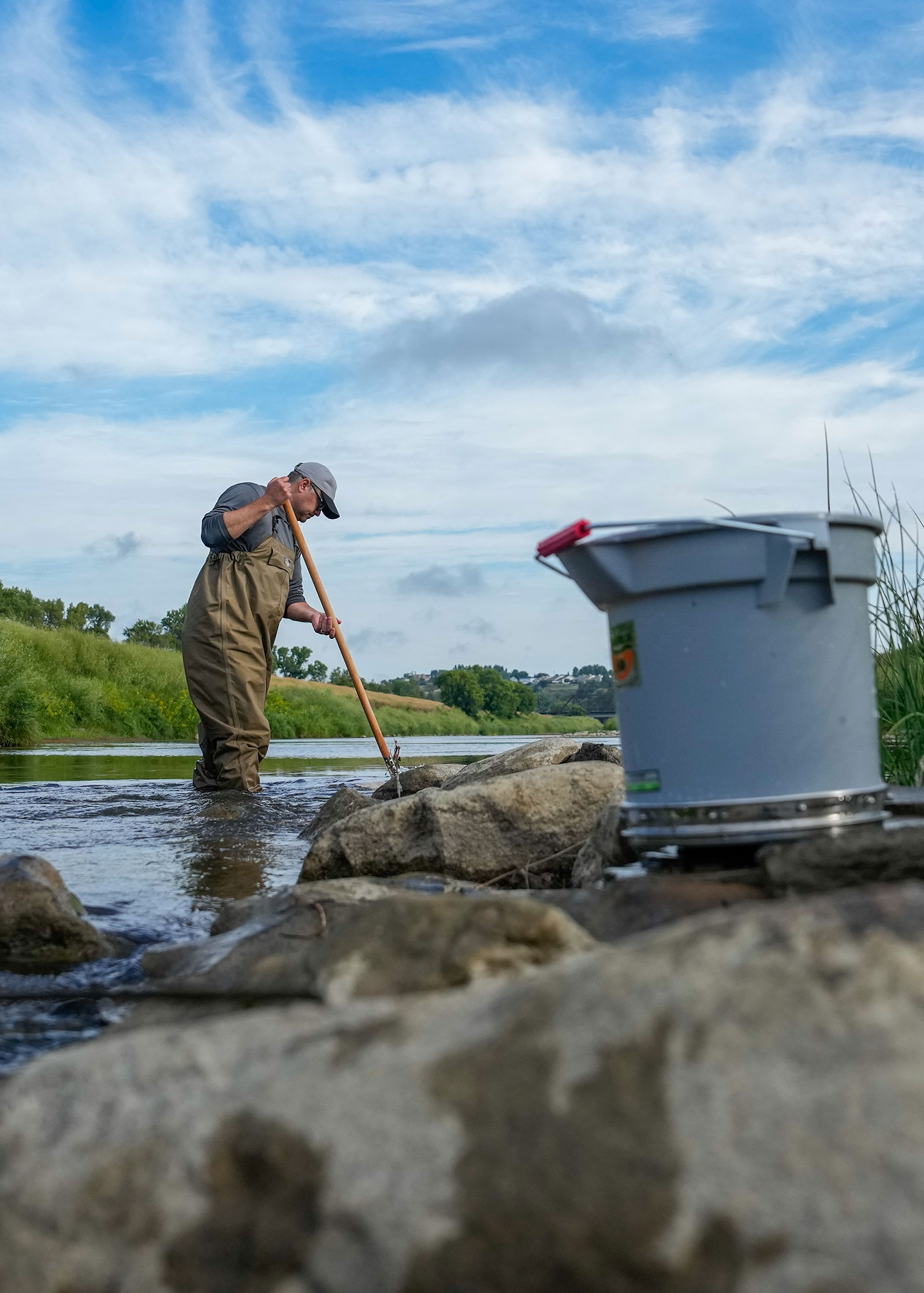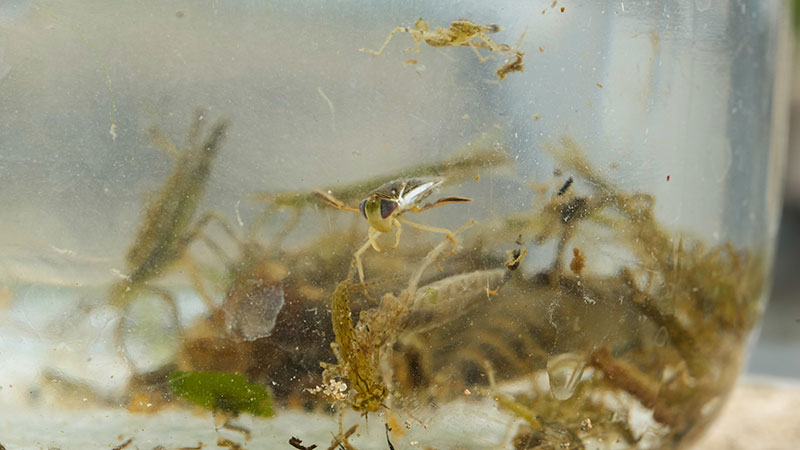Water Quality Indicators
Ron Wilson

Dressed in chest waders and armed with a D-frame net, Aaron Larsen disturbs the bottom of the Heart River with the long-handled tool, hoping whatever aquatic invertebrates living underwater wash into the net and reveal themselves.
“We sample for aquatic invertebrates for a variety of reasons, including gathering additional background information for our State Wildlife Action Plan as we try to evaluate some species that may be of conservation need and concern,” said Larsen, North Dakota Game and Fish Department conservation biologist.
“We also sample for invertebrates to use them as water quality indicators.
They’re useful for a variety of reasons.
Collectively, you can use the taxonomic information of the organisms you collect.
You can group them based on tolerance values, and kind of get a gauge of what the overall stream health and water quality is like at various locations around the state.”
Overall, he said, the Heart River is a good watershed when you look at it from a biological and water quality perspective, as there is a diverse community of aquatic organisms from benthic macroinvertebrates and, higher up the food chain, smallmouth bass, walleye and other species anglers target.
Aquatic invertebrates lack backbones and spend their entire lives, or a substantial portion of their lives, within a water environment.
Some of the typical species Larsen finds in places across the state like the Heart River are dragonfly, mayfly, caddisfly and stonefly larvae.
“In this location we have riffle habitat and then a pool, overhanging vegetation and aquatic vegetation,” Larsen said of the section of the Heart River near Mandan.
“What we want to do is grab a representative sample from all of those different habitat types just to get a collective representative sample of what organisms are residing in this location.”
Some may wonder why this underwater inspection of critters without backbones matters to an agency that, in most people’s views, mostly manage deer, pheasants and walleye.

“Biodiversity across North Dakota’s landscape is important.
It’s important to us as a Department and those in the conservation community.
We want to maintain as much biological diversity across the landscape as possible,” Larsen said.
“Aquatic invertebrates are also important for the food chain.
As I mentioned earlier, a lot of fish species that anglers like to target at some point throughout their life history feed on aquatic invertebrates, making them important members of the food chain as well.
There’s a lot of different human influences that put stress on our waterways.”
Even so, after years of nosing around North Dakota waterways for the Game and Fish Department and the North Dakota Department of Environmental Quality before that, Larsen said he’s optimistic about the condition of the state’s rivers, streams and other waters as we move into the future.
“I think overall environmental awareness is heightened these days.
And I think most folks, whether you live in an urban setting like Bismarck-Mandan or you’re an agricultural producer in a rural setting, take pride in their local watersheds and watershed health because watersheds, they basically mirror what happens on the landscape,” he said.
“Because they’re good indicators of what’s happening on the landscape, most people are aware and want to do the right thing and leave the environment better for the future generations.”
